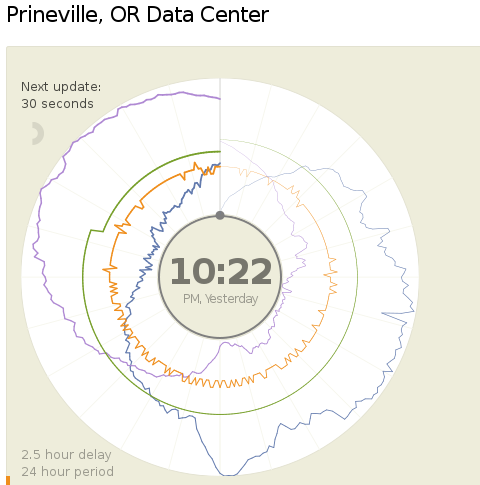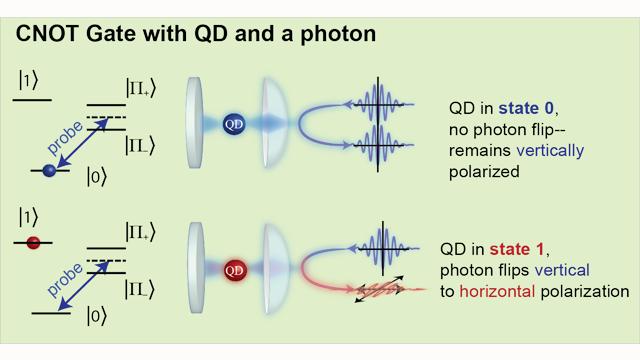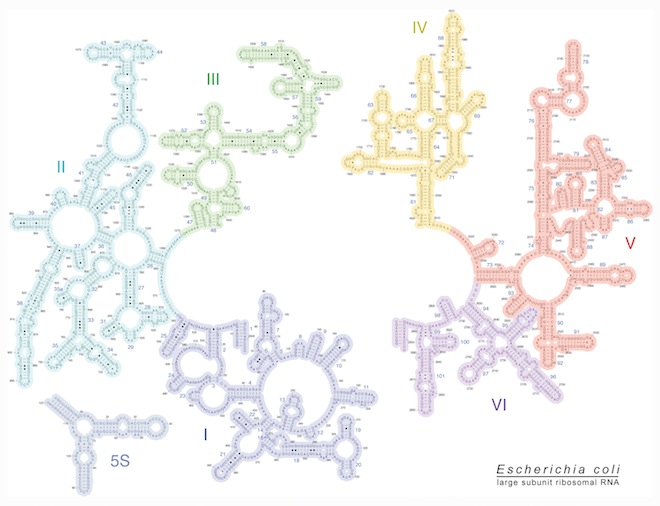Tuesday, April 23. 2013
In a Cyber War Is It OK to Kill Enemy Hackers?
Via Big Think
-----

The new Tallinn Manual on the International Law Applicable to Cyber Warfare, which lays out 95 core rules on how to conduct a cyber war, may end up being one of the most dangerous books ever written. Reading through the Tallinn Manual, it's possible to come to the conclusion that - under certain circumstances - nations have the right to use “kinetic force” (real-world weapons like bombs or armed drones) to strike back against enemy hackers. Of course, this doesn’t mean that a bunch of hackers in Shanghai are going to be taken out by a Predator Drone strike anytime soon – but it does mean that a nation abiding by international law conventions – such as the United States – would now have the legal cover to deal with enemy hackers in a considerably more muscular way that goes well beyond just jawboning a foreign government.
Welcome to the brave new world of cyber warfare.
The nearly 300-page Tallinn Manual, which was created by an independent group of twenty international law experts at the request of the NATO Cooperative Cyber Defense Center of Excellence, works through a number of different cyber war scenarios, being careful to base its legal logic on international conventions of war that already exist. As a result, there's a clear distinction between civilians and military combatants and a lot of clever thinking about everything -- from what constitutes a "Cyber Attack" (Rule #30) to what comprises a "Cyber Booby Trap" (Rule #44).
So what, exactly, would justify the killing of an enemy hacker by a sovereign state?
First, you’d have to determine if the cyber attack violated a state’s sovereignty. Most cyber attacks directed against the critical infrastructure or the command-and-control systems of another state would meet that standard. Then, you’d have to determine whether the cyber attack was of sufficient scope and intensity so as to constitute a “use of force” against that sovereign state. Shutting down the power grid for a few hours just for the lulz probably would not be a “use of force,” but if that attack happened to cause death, destruction, and mayhem, then it would presumably meet that threshold and would escalate the legal situation to one of "armed conflict." In such cases, warns the Tallinn Manual, sovereign states should first attempt diplomacy and all other measures before engaging in a retaliatory cyber-strike of proportional scale and scope.
But here's where it gets tricky - once we're in an "armed conflict," hackers could be re-classified as military targets rather than civilian targets, opening them up to military reprisals. They could then be targeted by whatever "kinetic force" we have available.
For now, enemy hackers in places like China can breathe easy. Most of what passes for a cyber attack today – “acts of cyber intelligence gathering and cyber theft” or “cyber operations that involve brief or periodic interruption of non-essential cyber services” would not fall into the “armed attack” category. Even cyber attacks on, say, a power grid, would have to have catastrophic consequences before it justifies a military lethal response. As Nick Kolakowski of Slashdot points out:
"In theory, that means a nation under cyber-attack that reaches a certain level—the “people are dying and infrastructure is destroyed” level—can retaliate with very real-world weapons, although the emphasis is still on using cyber-countermeasures to block the incoming attack."
That actually opens up a big legal loophole, and that's what makes the Tallinn Manual potentially so dangerous. Even the lead author of the Tallinn Manual (Michael Schmitt, chairman of the international law department at the U.S. Naval War College) admits that there's actually very little in the manual that specifically references the word "hacker" (and a quick check of the manual's glossary didn't turn up a single entry for "hacker").
Theoretically, a Stuxnet-like hacker attack on a nuclear reactor that spun out of control and resulted in a Fukushima-type scenario could immediately be classified as an act of war, putting the U.S. into "armed conflict." Once we reach that point, anything is fair game. We're already at the point where the U.S. Air Force is re-classifying some of its cyber tools as weapons and preparing its own rules of engagement for dealing with the growing cyber threat from China. It's unclear which, if any, of these "cyber-weapons" would meet the Tallinn Manual's definitional requirement of a cyber counter-attack.
The Tallinn Manual’s recommendations (i.e. the 95 rules) are not binding, but they will likely be considered by the Obama Administration as it orchestrates its responses against escalating hacker threats from China. Rational voices would seem to tell us that the "kinetic force" scenario could never occur, that a state like China would never let things escalate beyond a certain point, and that the U.S. would never begin targeting hackers around the world. Yet, the odds of a catastrophic cyber attack are no longer microscopically small. As a result, will the day ever come when sovereign states take out enemy hackers the same way the U.S. takes out foreign terrorists abroad, and then hide behind the rules of international law embodied within the Tallinn Manual?
Friday, April 19. 2013
A new way to report data center's Power and Water Usage Effectiveness (PUE and WUE)
-----

Today (18.04.2013) Facebook launched two public dashboards that report continuous, near-real-time data for key efficiency metrics – specifically, PUE and WUE – for our data centers in Prineville, OR and Forest City, NC. These dashboards include both a granular look at the past 24 hours of data and a historical view of the past year’s values. In the historical view, trends within each data set and correlations between different metrics become visible. Once our data center in Luleå, Sweden, comes online, we’ll begin publishing for that site as well.
We began sharing PUE for our Prineville data center at the end of Q2 2011 and released our first Prineville WUE in the summer of 2012. Now we’re pulling back the curtain to share some of the same information that our data center technicians view every day. We’ll continue updating our annualized averages as we have in the past, and you’ll be able to find them on the Prineville and Forest City dashboards, right below the real-time data.
Why are we doing this? Well, we’re proud of our data center efficiency, and we think it’s important to demystify data centers and share more about what our operations really look like. Through the Open Compute Project (OCP), we’ve shared the building and hardware designs for our data centers. These dashboards are the natural next step, since they answer the question, “What really happens when those servers are installed and the power’s turned on?”
Creating these dashboards wasn’t a straightforward task. Our data centers aren’t completed yet; we’re still in the process of building out suites and finalizing the parameters for our building managements systems. All our data centers are literally still construction sites, with new data halls coming online at different points throughout the year. Since we’ve created dashboards that visualize an environment with so many shifting variables, you’ll probably see some weird numbers from time to time. That’s OK. These dashboards are about surfacing raw data – and sometimes, raw data looks messy. But we believe in iteration, in getting projects out the door and improving them over time. So we welcome you behind the curtain, wonky numbers and all. As our data centers near completion and our load evens out, we expect these inevitable fluctuations to correspondingly decrease.
We’re excited about sharing this data, and we encourage others to do the same. Working together with AREA 17, the company that designed these visualizations, we’ve decided to open-source the front-end code for these dashboards so that any organization interested in sharing PUE, WUE, temperature, and humidity at its data center sites can use these dashboards to get started. Sometime in the coming weeks we’ll publish the code on the Open Compute Project’s GitHub repository. All you have to do is connect your own CSV files to get started. And in the spirit of all other technologies shared via OCP, we encourage you to poke through the code and make updates to it. Do you have an idea to make these visuals even more compelling? Great! We encourage you to treat this as a starting point and use these dashboards to make everyone’s ability to share this data even more interesting and robust.
Lyrica McTiernan is a program manager for Facebook’s sustainability team.
Wednesday, April 17. 2013
Google Mirror API now available
Tuesday, April 16. 2013
Oculus Rift finally gets the reaction virtual reality always wanted
Via Slash Gear
-----
We’ve already heard plenty about the Oculus Rift virtual reality headset, and while we youngsters are pretty amazed by the technology, nobody has their mind blown more than the elderly, who could only dream about such technology back in their younger days. Recently, a 90-year-old grandmother ended up trying out the Oculus Rift for herself, and she was quite amazed.

Imagimind Studio developer Paul Rivot ended up grabbing an Oculus Rift in order to play around with it and develop some games, but he took a break from that and decided to give his grandmother a little treat, by strapping the Oculus Rift to her head in order to experience a bit of virtual reality herself.
The video is quite entertaining to watch, and we can’t imagine what’s going on inside of her head, knowing that she never grew up with such technology as the Oculus Rift, let alone 3D video games. She even gets to the point where she thought the images being displayed were actual images taken on-location, when in fact it’s all 3D-rendered on a computer.
Currently, the Oculus Rift is out in the wild for developers only at this point, and there’s no announced release date for the device, although the company has noted that it should arrive to the general public before the 2014 holiday season. In the meantime, it’s videos like this that only excite us even more.
Thursday, April 11. 2013
Researchers Replace Passwords With Mind-Reading Passthoughts
Via Mashable
-----
Remembering the passwords for all your sites can get frustrating. There are only so many punctuation, number substitutes and uppercase variations you can recall, and writing them down for all to find is hardly an option.
Thanks to researchers at the UC Berkeley School of Information, you may not need to type those pesky passwords in the future. Instead, you'll only need to think them.
By measuring brainwaves with biosensor technology, researchers are able to replace passwords with "passthoughts" for computer authentication. A $100 headset wirelessly connects to a computer via Bluetooth, and the device's sensor rests against the user’s forehead, providing a electroencephalogram (EEG) signal from the brain.
Other biometric authentication systems use fingerprint or retina scans for security, but they're often expensive and require extensive equipment. The NeuroSky Mindset looks just like any other Bluetooth set and is more user-friendly, researchers say. Brainwaves are also unique to each individual, so even if someone knew your passthought, their emitted EEG signals would be different.
In a series of tests, participants completed seven different mental tasks with the device, including imagining their finger moving up and down and choosing a personalized secret. Simple actions like focusing on breathing or on a thought for ten seconds resulted in successful authentication.
The key to passthoughts, researchers found, is finding a mental task that users won’t mind repeating on a daily basis. Most participants found it difficult to imagine performing an action from their favorite sport because it was unnatural to imagine movement without using their muscles. More preferable passthoughts were those where subjects had to count objects of a specific color or imagine singing a song.
The idea of mind-reading is pretty convenient, but if the devices aren't accessible people will refuse to use it no matter how accurate the system, researchers explain.
Tuesday, April 09. 2013
A Problem Google Has Created for Itself
Via The Atlantic
-----
Over the eons I've been a fan of, and sucker for, each latest automated system to "simplify" and "bring order to" my life. Very early on this led me to the beautiful-and-doomed Lotus Agenda for my DOS computers, and Actioneer for the early Palm. For the last few years Evernote has been my favorite, and I really like it. Still I always have the roving eye.
So naturally I have already downloaded the Android version of Google's new app for collecting notes, photos, and info, called Google Keep, with logo at right. This early version has nothing like Evernote's power or polish, but you can see where Google is headed.

Friday, April 05. 2013
Computers Made Out of DNA, Slime and Other Strange Stuff
Via Wired
-----

Everybody knows a computer is a machine made of metal and plastic, with microchip cores turning streams of electrons into digital reality.
A century from now, though, computers could look quite different. They might be made from neurons and chemical baths, from bacterial colonies and pure light, unrecognizable to our old-fashioned 21st century eyes.
Far-fetched? A little bit. But a computer is just a tool for manipulating information. That's not a task wedded to some particular material form. After all, the first computers were people, and many people alive today knew a time when fingernail-sized transistors, each representing a single bit of information, were a great improvement on unreliable vacuum tubes.
On the following pages, Wired takes a look at some very non-traditional computers.
Above:Slime Computation
"The great appeal of non-traditional computing is that I can connect the un-connectable and link the un-linkable," said Andy Adamatzky, director of the Unconventional Computing Center at the University of the West of England. He's made computers from electrified liquid crystals, chemical goo and colliding particles, but is best known for his work with Physarum, the lowly slime mold.
Amoeba-like creatures that live in decaying logs and leaves, slime molds are, at different points in their lives, single-celled organisms or part of slug-like protoplasmic blobs made from the fusion of millions of individual cells. The latter form is assumed when slime molds search for food. In the process they perform surprisingly complicated feats of navigation and geometric problem-solving.
Slime molds are especially adept at finding solutions to tricky network problems, such as finding efficient designs for Spain's motorways and the Tokyo rail system. Adamatzky and colleagues plan to take this one step further: Their Physarum chip will be "a distributed biomorphic computing device built and operated by slime mold," they wrote in the project description.
"A living network of protoplasmic tubes acts as an active non-linear transducer of information, while templates of tubes coated with conductor act as fast information channels," describe the researchers. "Combined with conventional electronic components in a hybrid chip, Physarum networks will radically improve the performance of digital and analog circuits."
Image: Adamatzky et al./International Journal of General Systems
The Power of the Blob
Inspired by slime mold's problem-solving abilities, Adamatzky and Jeff Jones, also of the University of the West of England, programmed the rules for its behavior into a computational model of chemical attraction. That Russian nesting doll of emulations -- slime mold interpreted as a program embodied in chemistry translated into a program -- produced a series of experiments described in one superbly named paper: "Computation of the Travelling Salesman Problem by a Shrinking Blob."
In that paper, released March 25 on arXiv, Jones and Adamatzky's simulated chemical goo solves a classic, deceptively challenging mathematical problem, finding the shortest route between many points. For a few points this is simple, but many points become intractably difficult to compute -- but not for the blob (above).
Video: Jeff Jones and Andrew Adamatzky

Crystal Calculations
For decades, scientists who study strange materials known as complex fluids, which switch easily between different phases of matter, have been fascinated by the extraordinary geometries formed by liquid crystals at different temperatures and pressures.
Those geometries are stored information, and the interaction of crystals a form of computation. By running an electric current through a thin film (above) of liquid crystals, researchers led by Adamatzky were able to perform basic computational math and logic.
Image: Adamatzky et al./arXiv
Computational DNA
It's hard to keep up with the accomplishments of synthetic biologists, who every week seem to announce some new method of turning life's building blocks into pieces for cellular computers. Yet even in this crowded field, last week's announcement by Stanford University researchers of a protein-based transistor stood out.
Responsible for conducting logic operations, the transistor, dubbed a "transcriptor," is the last of three components -- the others, already developed, are rewritable memory and information transmission -- necessary to program cells as computers. Synthetic biologist Drew Endy, the latest study's lead author, envisions plant-based environmental monitors, programmed tissues and even medical devices that "make Fantastic Voyage come true," he said.
In the image above, Endy's cellular "buffer gates" flash red or yellow according to their informational state. In the image below, a string of DNA programmed by synthetic biologist Eric Winfree of the California Institute of Technology runs synthetic code -- the A's, C's, T's and G's -- with its molecules.
Image: Bonnet et al./Science
Evolution's Design
Most designs for molecular computers are based on human notions of what a computer should be. Yet as researchers applied mathematician Hajo Broersma of the Netherlands' University of Twente wrote of their work, "the simplest living systems have a complexity and sophistication that dwarfs manmade technology" -- and they weren't even designed to be that way. Evolution generated them.
In the NASCENCE project, short for "NAnoSCale Engineering for Novel Computation using Evolution," Broersma and colleagues plant to exploit evolution's ability to use combinations of molecules and their emergent properties in unexpected, incredibly powerful ways. They hope to develop a system that interfaces a digital computer with nano-scale particle networks, then use the computer to set algorithmic goals towards which evolution will guide the particles.
"We want to develop alternative approaches for situations or problems that are challenging or impossible to solve with conventional methods and models of computation," they write. One imagines computer chips with geometries typically seen in molecular structures, such as the E. coli ribosome and RNA seen here; success, predict Broersma's team, could lay "the foundations of the next industrial revolution."
Images: Center for Molecular Biology of RNA/University of California, Santa Cruz

Particle Collisions
The Large Hadron Collider's 17 miles of track make it the world's largest particle accelerator. Could it also become the world's largest computer?
Not anytime soon, but it's at least possible to wonder. Another of Adamatzky's pursuits is what he calls "collision-based computing," in which computationally modeled particles course through a digital cyclotron, with their interactions used to carry out calculations. "Data and results are like balls travelling in an empty space," he said.
In the image below, simulated particle collisions evolve over time. Above, protons collide during the Large Hadron Collider's ATLAS experiment.
Images: 1) CERN 2) Martinez et al./A Computable Universe

Quantum Computers
The idea of computers that harness the spooky powers of quantum physics -- such as entanglement, in which far-flung particles are linked across space and time, so that altering one instantaneously affects the other -- has been around for years. And though quantum computers are still decades from reality, achievements keep piling up: entanglement made visible to the naked eye, performed with ever-greater numbers of particles, and used to control mechanical objects.
The latest achievement, described March 31 in Nature Photonics by physicist Edo Waks of the University of Maryland and colleagues, involves the control of photons with logic gates made with quantum dots, or crystal semiconductors controlled by lasers and magnetism. The results "represent an important step towards solid-state quantum networks," the researchers wrote.
Image: Schematic of the quantum dot-controlled photon. (Kim et al./Nature Photonics)
Frozen Light
If quantum computers running on entangled photons are still far-off, there's another, non-quantum possibility for light-based computing. Clouds of ultra-cold atoms, frozen to temperatures just above absolute zero -- the point at which all motion ceases -- might be used to slow and control light, harnessing it inside an optical computer chip.
Image: Schematic of controlled light. (Anne Goodsell/Harvard University)
The Quantum Brain
It's easy to think of minds as computers, and accurate in the sense that brains are information-processing systems. They are also, however, exponentially more complex and sophisticated than any engineered device.
Even as quantum computing remains a far-off dream, some scientists think quantum physics underlies our thoughts. The question is far from settled, but quantum processes have been observed in a variety of non-human cells, raising the alluring possibility of a role in thought.
"Quantum computation occurs in the human mind, but only at the unconscious level," said theoretical physicist Paola Zizzi of Italy's University of Padua. "As quantum computation is much faster than classical computation, the unconscious thought is then much faster than the conscious thought and in a sense, it 'prepares' the latter."
If identified in our brains, quantum thinking could be used to inspire computer designs not yet dreamed of. Broadly speaking, that's a motivation of many in the non-conventional computing community, said Hector Zenil, a computer scientist at Sweden's Karolinska University and editor of A Computable Universe: Understanding and Exploring Nature as Computation.
Zenil isn't convinced by quantum claims for the brain, but he sees a world suffused by informational processes. Researchers like himself and Zizzi are trying to "use the computational principles that nature may use in order to conceive new kinds of computing," said Zenil.
Image: Sea slug neuron. (Dylan Burnette/Olympus Bioscapes)

Universe As Computer
In A Computable Universe, Zenil and others take the idea of computation as an abstract process, capable of being performed on any system that can store and manipulate information, to its logical extreme. Computers might not only be made from chemicals and cells and light, they say; the universe itself could be a computer, processing the information of which our everyday experiences -- and everything else -- are composed.
This is a tricky idea -- if the universe is computed, what's the computer? -- and for obvious reasons difficult to test, though Zenil thinks it's possible. In his work on the algorithmic aspects of existence, he's developed measures of the statistical distributions one would expect to see if reality is in fact computed.
If that seems a scary proposition, in which life would play out in linear mechanical ordination, rest assured: mechanistic, predetermined processes don't hold sway in a universal computer. Some aspects of existence will necessarily be "undecidable," impossible to describe with algorithms or predict beforehand. Ghosts will still live in the machine.
Image: The Milky Way galaxy/NASA/ESA/Q.D. Wang/Jet Propulsion Laboratory/S. Stolovy
Thursday, April 04. 2013
Writing Open Source Software? Make Sure You Know Your Copyright Rights
Via SmartBear
-----

Open source is all fine and dandy, but before throwing yourself – and untold lines of code – into a project, make sure you understand exactly what’s going to happen to your code’s copyrights. And to your career.
I know. If you wanted to be a lawyer, you would have gone to law school instead of spending your nights poring over K&R. Tough. In 2013, if you're an open source programmer you need to know a few things about copyright law. If you don't, bad things can happen. Really bad things.
Before launching into this topic, I must point out that I Am Not A Lawyer (IANAL). If you have a specific, real-world question, talk to someone who is a lawyer. Better still, talk to an attorney who specializes in intellectual property (IP) law.
Every time you write code, you're creating copyrighted work. As Simon Phipps, President of the OSI Open Source Initiative (OSI) said when I asked him about programmer copyright gotchas, "The biggest one is the tendency for headstrong younger developers to shun copyright licensing altogether. When they do that, they put all their collaborators at risk and themselves face potential liability claims.”
Developers need to know that copyright is automatic under the Berne Convention, Phipps explained. Since that convention was put into place, all software development involve copying and derivatives, Phipps said; all programming without a license potentially infringes on copyright. “It may not pose a problem today, but without a perpetual copyright license collaborators are permanently at risk."
“You can pretend copyright doesn't exist all you want, but one day it will bite you,” Phipps continued. “That's why [if you want to start a new project] you need to apply an open source license.” If you want public domain, use the MIT license; it's very simple and protects you and your collaborators from these risks. If you really care, use a modern patent-protecting license like Apache, MPLv2, or GPLv3. Just make sure you get one.
Who Owns That Work-for-Hire Code? It Might Be You
You should know when you own the copyright and when your employer or consulting client does. If the code you wrote belongs to the boss, after all, it isn’t yours. And if it isn’t yours, you don’t have the right to assign the copyright to an open source project. So let’s look, first, at the assumption that employment or freelance work is automatically work for hire.
For example, that little project of yours that you've been working on during your off-hours at work? It's probably yours but... as Daniel A. Tysver, a partner at Beck & Tysver wrote on BitLaw:
"Software developers should pay close attention to copyright ownership issues when hiring computer programmers. Programs written by salaried employees will, in almost all cases, be considered works made for hire. …
As a result, the software developer itself will be considered the author of the software written by those employees, and ownership will properly reside with the developer. However, the prudent developer will nonetheless have employees sign agreements whereby they agree to assign all copyrights in software they develop to the software developer. The reason for this prudence is that the determination of who is an employee under the law of agency requires an analysis of many factors and might cause unexpected results in rare cases. In addition, the work made for hire doctrine requires that the work be done 'within the scope of' the employee's employment. Generally, programs written by a software programmer employee will be within the scope of his or her employment, but this again is an ambiguous phrase that is best not to rely upon."
What if you're a freelance programmer and you're writing code under a "work for hire" contract? Does your client then own the copyright to the code you wrote – whether or not it’s part of an open source project as well? Well... actually maybe they do, maybe they don't.
Tysver continued:
Software developers must be especially careful when hiring contract programmers. In order for the work of contract programmers to be considered a work made for hire, three facts must exist:
The program must be specially ordered or commissioned;
The contract retaining the programmer must be in writing and must explicitly say that the programs created under the agreement are to be considered a work made for hire; and
The program created must fall into one of the nine enumerated categories of work.
The first element will generally be true when the programmer is hired to work on a specific project. The second element can be met through careful drafting of contract programmer's retainer agreement. The third element, however, can be more difficult. Computer software programs are not one of the nine enumerated categories. The best bet is to fit the software program under the definition of an "audiovisual work." While some software programs are clearly audiovisual works, it is unclear whether courts will allow this phrase to include all computer software programs. Thus, a software developer cannot be sure whether the contract programmer is creating a work made for hire.
It is best to draft an agreement which reflects this uncertainty. The agreement should state that the work is a work made for hire. However, the agreement should also state that if the software is not considered a work made for hire, the contract programmer agrees to assign the copyright in the software to the software developer.
Finally, when hiring a company to provide contract programming services, it is important to make sure that the copyright ownership passes all the way from the individual programmer to the software developer. Therefore, the software developer should review not only its agreement with the company providing the services, but also the agreements by which that company hires individual programmers.
Is he saying that that work-for-hire contract you signed that didn't spell who got the copyright for the code means you may still have the copyright? Well, yes, actually he is. If you take a close look at U.S. Copyright law (PDF), you'll find that there are nine classes of work that are described as “work made for hire” (WMFH). None of them are programming code.
So, as an author wrote on Law-Forums.org, under the nom de plume of morcan, “Computer programs do not generally fall into any of the statutory categories for commissioned WMFH and therefore, simply calling it that still won't conform to the statute."
He or she continued, "Therefore, you can certainly have a written WMFH agreement (for what it's worth) that expressly outlines the intent of the parties that you be the 'author and owner of the copyright' of the commissioned work, but you still need a (separate) transfer and assignment of all right, title and interest of the contractor's copyright of any and all portions of the works created under the project, which naturally arises from his or her being the author of the WMFH." In other words, without a “transfer of copyright ownership” clause in your contract, you the programmer, not the company that gave you the contract, may still have the copyright.
 That
can lead to real trouble. "I have actually seen major corporate
acquisitions get scuttled because someone at the target software company
had 'contracted programmers' under WMFH agreements but failed to obtain
the necessary written transfer of the contractors' copyrights,” morcan
added.
That
can lead to real trouble. "I have actually seen major corporate
acquisitions get scuttled because someone at the target software company
had 'contracted programmers' under WMFH agreements but failed to obtain
the necessary written transfer of the contractors' copyrights,” morcan
added.
Rich Santalesa, senior counsel at InformationLawGroup, agreed with morcan. “What tends to happen is that cautious (read: solid) software/copyright attorneys use a belt and suspenders approach, adding into the development agreement that it’s 'to the full extent applicable' a 'Work for Hire' — in the event, practically, that the IRS or some other taxing entity says 'no that person is an employee and not an independent contractor,’” said Santalesa. They also include a transfer and assignment provision that is effective immediately upon execution.
“Whenever and wherever possible we [copyright attorneys representing the contracting party for the work] attempt to apply a Work for Hire situation,” explained Santalesa. “So the writer/programmer is, for copyright purposes, never the 'legal author.' It can get tricky, and as always the specific facts matter, with the proof ultimately in the contractual pudding that comes out of the oven.”
What I take all this to mean is you should make darn sure that both you and the company that contracted you have a legal contract spelling out exactly what happens to the copyright of any custom code. Simply saying something is a work for hire doesn't cut the mustard.
Now, Add in Open Source Contributions
These same concerns also apply to open source projects. Most projects have some kind of copyright assignment agreements (CAAs) or copyright licensing agreements (CLAs) you must sign before the code you write is committed to the project. In CAAs, you assign your copyright to a company or organization; in CLAs you give the group a broad license to work with your code.
While some open source figures, such as Bradley Kuhn of the Software Freedom Conservancy, don't want either kind of copyright agreement in open source software, almost all projects have them.
And they can often cause headaches.
Take, for example, the recent copyright fuss in the GnuTLS project, a free software implementation of the SSL (Secure Socket Layer) protocol. The project's founder, and one of its two main authors, Nikos Mavrogiannopoulos, announced in December 2012 that he was moving the project outside the infrastructure of the GNU project because of a major disagreement with the Free Software Foundation’s (FSF) decisions and practices. “I no longer consider GnuTLS a GNU project,” he wrote, “and future contributions are not required to be under the copyright of FSF.”
Richard M. Stallman, founder of GNU and the FSF, wasn't having any of that! In an e-mail entitled, GNUTLS is not going anywhere, Stallman, a.k.a. RMS, replied, "You cannot take GNUTLS out of the GNU Project. You cannot designate a non-GNU program as a replacement for a GNU package. We will continue the development of GNUTLS."
You see, while you don't have to assign your copyright to the FSF when you create a GNU project, the FSF won't protect the project's IP under the GPL unless you do make that assignment. And, back when the project started, Mavrogiannopoulos had transferred the copyrights. In addition, no matter where you are in the world, as RMS noted, if you do elect this path, the copyright goes to the U.S. FSF, not to one of its sister organizations.
After many heated words, this particular conflict calmed down. Mavrogiannopoulos now wishes he had made a different decision. “I pretty much regret transferring all rights to FSF, but it seems there is nothing I can do to change that.” He can fork the code, but he can't take the project's name with him since that's part of the copyright.
That may sound as though it’s getting far afield of The Least I Need to Know About Copyright as an Open Source Developer, but bear with me for a moment. Because it raises several troubling issues
As Michael Kerrisk, a LWN.net author put it, "The first of these problems has already been shown above: Who owns the project? The GnuTLS project was initiated in good faith by Nikos as a GNU project. Over the lifetime of the project, the vast majority of the code contributed to the project has been written by two individuals, both of whom (presumably) now want to leave the GNU project. If the project had been independently developed, then clearly Nikos and Simon would be considered to own the project code and name. However, in assigning copyright to the FSF, they have given up the rights of owners.”
However, there's more. As Kerrisk pointed out, “The ability of the FSF—as the sole copyright holder—to sue license violators is touted as one of the major advantages of copyright assignment. However, what if, for one reason or another, the FSF chooses not to exercise its rights?" What advantage does the programmer get then from assigning his or her copyright?
Finally, Kerrisk added, there's a problem that occurs with assignment both to companies and to non-profits. “The requirement to sign a copyright assignment agreement imposes a barrier on participation. Some individuals and companies simply won't bother with doing the paperwork. Others may have no problem contributing code under a free software license, but they (or their lawyers) balk at giving away all rights in the code.”
Can You Contribute to a Project? Legally?
The barrier to participation isn't just theoretical. Kerrisk cites the example of Greg Kroah-Hartman, the well-known Linux kernel developer. Kroah-Hartman, during a conversation about whether the Gentoo Linux distribution should seek copyright assignments, said, "On a personal note, if any copyright assignment was in place, I would never have been able to become a Gentoo developer, and if it were to be put into place, I do not think that I would be allowed to continue to be one. I'm sure lots of other current developers are in this same situation.”
Other non-profit open source groups take different approaches. The Apache Foundation, for instance, asks for "a perpetual, worldwide, non-exclusive, no-charge, royalty-free, irrevocable copyright license to reproduce, prepare derivative works of, publicly display, publicly perform, sublicense, and distribute Your Contributions and such derivative works."
If you have any questions about a particular group—and you should have questions—check to see exactly what rights the group requires in its contributor license agreement. Then, if you still have questions (you probably will) check with the organization or an IP attorney. This is not a check-mark that you ignore as blithely as all those websites where you click on “I have read and will adhere to the privacy policy.” In a literal sense you are committing yourself, or at least the code you wrote in all those bleary-eyed debugging sessions that required three cups of coffee.
The assignment of rights is not just a copyright problem for non-profit open source groups. Several commercial open source organizations ask you to give them your contributed code's copyright for their projects. Others, such as Oracle (PDF) asks for joint copyright to any of your contributions for its OpenJDK, GlassFish, and MySQL projects.
Some companies, such as Ubuntu Linux's parent company, Canonical, have backed off on asking for these claims. Canonical, for instance, now states that “You retain ownership of the Copyright in Your Contribution and have the same rights to use or license the Contribution which You would have had without entering into the Agreement." Red Hat, in its Fedora Project Contributor Agreement now asks only that you have the right to grant use of the copyrighted code and that it be licensed under either the Creative Commons Attribution-ShareAlike 3.0 Unported License or a variation of the MIT License. If you don't know what is being asked of you, get expert advice.
With all these differences in how to handle copyright disagreements you might wonder why someone hasn't tried to come with one common way of handling them. Well, they have: It’s called Project Harmony. However, Project Harmony hasn't picked up a lot of support and its copyright templates have not been widely accepted.
The bottom line isn't that you have to become a lawyer to code—although I could understand how you might feel that way!—but you do have to carefully examine what rights you have to your code. You need to understand what rights you're giving up or sharing with an open source license and a particular project. And if you're still puzzled, you need to seek expert legal help.
You don't want to find yourself in a copyright quagmire. Good luck.
Wednesday, April 03. 2013
The smell-o-vision TV implements scents with your favorite TV programs
Via Slashgear
-----
A tech team from Tokyo University of Agriculture and Technology in Japan have unveiled a smell-o-vision TV that will bring a sense of reality from our favorite TV programs. The team created a “smelling screen” that enables scents in spots where the corresponding object is placed. The screen generates scents from gel pellets from four air streams on all corners of the display. The scents are blown at varying and controlled rates to make it seem as though the scent is coming directly from the object on-screen.

This isn’t the first time the “smell-o-vision” technology has appeared in the tech world, however it is the first time that is has been implemented into television screens. The smell-o-vision technology was first implemented in a 1960?s film titled “Scent of Mystery”. The film launched in 3 customized movie theaters in New York City, Los Angeles, and Chicago. In the film, there were scents dispersed to the audience during certain moments in the film. Unfortunately, the film was a huge failure due to the malfunctioning of the scent mechanism. There were delayed actions between the specific scenery and the scents, and the mechanisms made a loud noise while releasing the scents.
This Japanese team seems to have been able to address the problem however, and successfully implemented the smell-o-vision technology in televisions. Right now, there can only be one scent released at a time, however, the team hopes to be able to make it so multiple smells could be implemented at the same time. They’re hoping to do so by implementing a cartridge-like system that will allow them to alternate smells more easily.
While the smell-o-vision can make movies and TV shows more engaging and real, it also has somewhat of a negative effect. Advertisement agencies can take advantage of the technology as well, and when they do, all hell will break loose. If you thought that steak in that commercial looked good now, wait until you can actually smell it. With this new technology, restaurants will be able to more effectively rake in customers with their advertisements. We’ll keep you posted as soon as more information regarding the smell-o-vision is unveiled.
Quicksearch
Popular Entries
- The great Ars Android interface shootout (130671)
- Norton cyber crime study offers striking revenue loss statistics (100880)
- MeCam $49 flying camera concept follows you around, streams video to your phone (99676)
- Norton cyber crime study offers striking revenue loss statistics (57109)
- The PC inside your phone: A guide to the system-on-a-chip (56964)




